[Commodore 64, Concept Software]
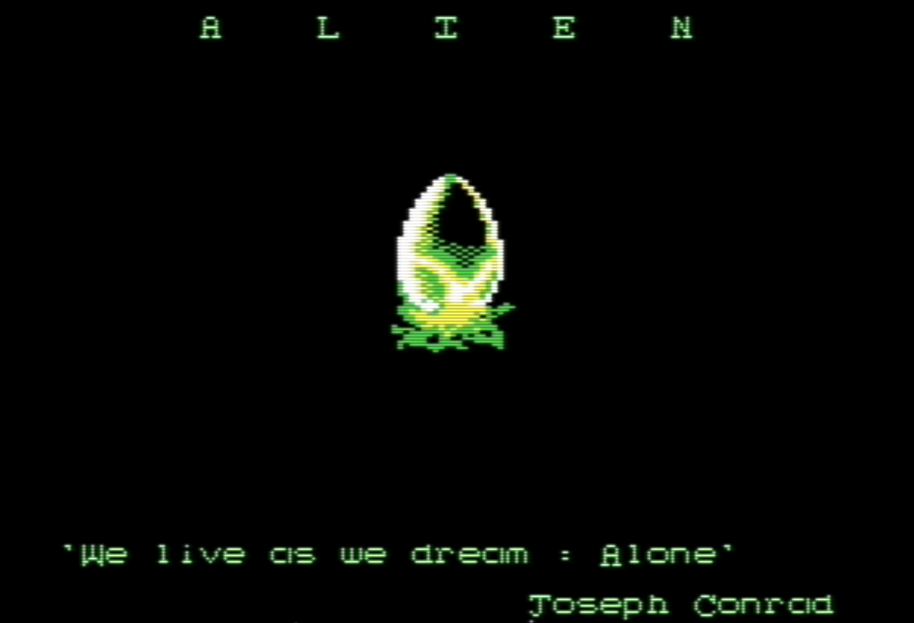
– Lieutenant Narwhal, it’s time for another mission on your favorite starship,
– Oh no! Not the USS Enterprise again, sir!
– Who said anything about the USS Enterprise? I want you for a peaceful cargo mission on the Nostromo
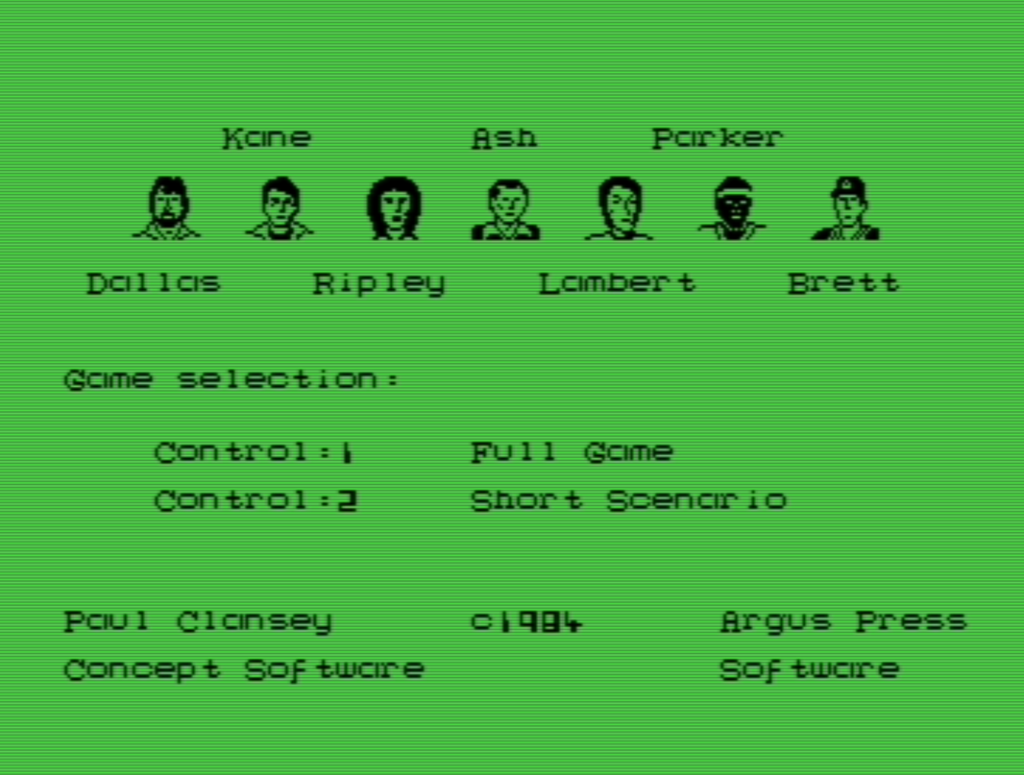
As far as wargames are concerned, Alien has been a more successful licence than WW1, as I am now covering my third Alien game, after the disappointing and unofficial Avalon Hill title, and the terrible and unofficial PSS title. This time however, Argus Press Software managed to nail the rights on the movie, and so we finally get to officially control Ripley, Dallas, Ash, Lambert, Parker, Brett and that guy who dies at the beginning of the story.
![]() Kane, my name is Kane.
Kane, my name is Kane.
![]() Sure. Whatever. You’ve got either an astronaut helmet or a hugger on the face for that short moment in the movie where you’re not actually dead. No one gets to know you as a character, and the only thing the spectator remembers is that you were too curious and also a big eater toward the end of your life.
Sure. Whatever. You’ve got either an astronaut helmet or a hugger on the face for that short moment in the movie where you’re not actually dead. No one gets to know you as a character, and the only thing the spectator remembers is that you were too curious and also a big eater toward the end of your life.
A word of warning: this Alien is a mix of great ambition, innovation and game-ruining bugs and design issues; I ran a “final game” several times to try to encapsulate the best of the game – but failed to have a completely frustration-free game, so at some point I stopped and just decided that whatever happens is going to be the AAR. Here is it.
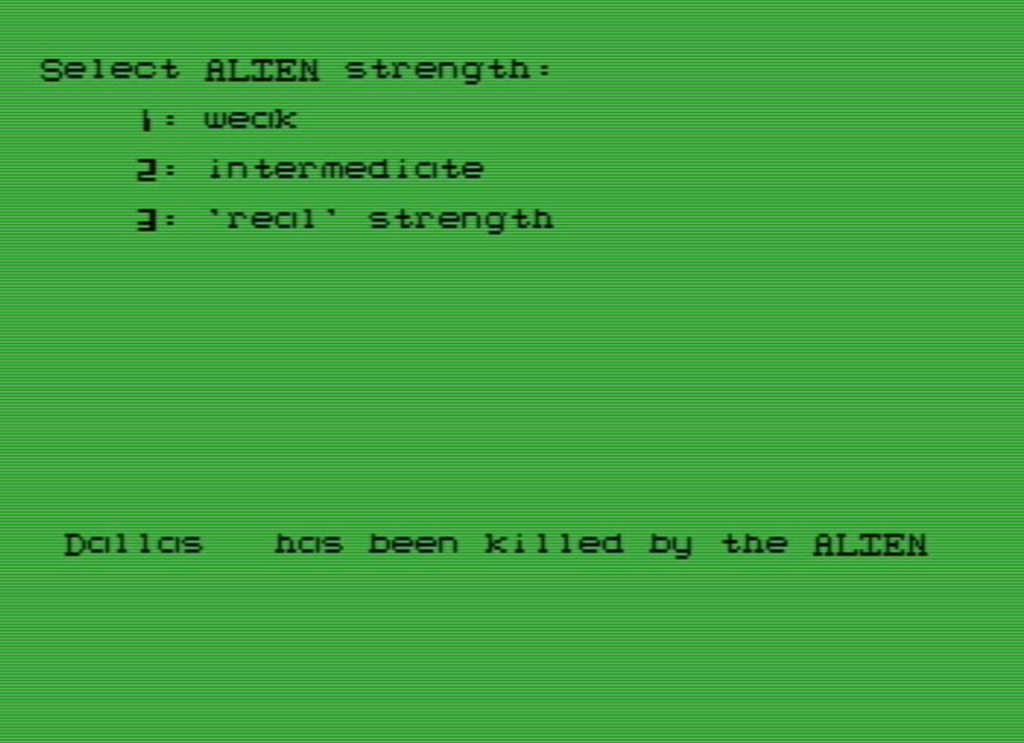
![]() It must be a mistake! I am supposed to die last: I was in M*A*S*H*! I am the most famous actor of the crew!
It must be a mistake! I am supposed to die last: I was in M*A*S*H*! I am the most famous actor of the crew!
When the worst food poisoning you could conceive takes the life of Dallas, the crew of the Nostromo is distributed in two rooms:
- Kane, Ripley and Brett are in the command center, where for some reason there are two incinerators and a motion detector that they immediately equip,
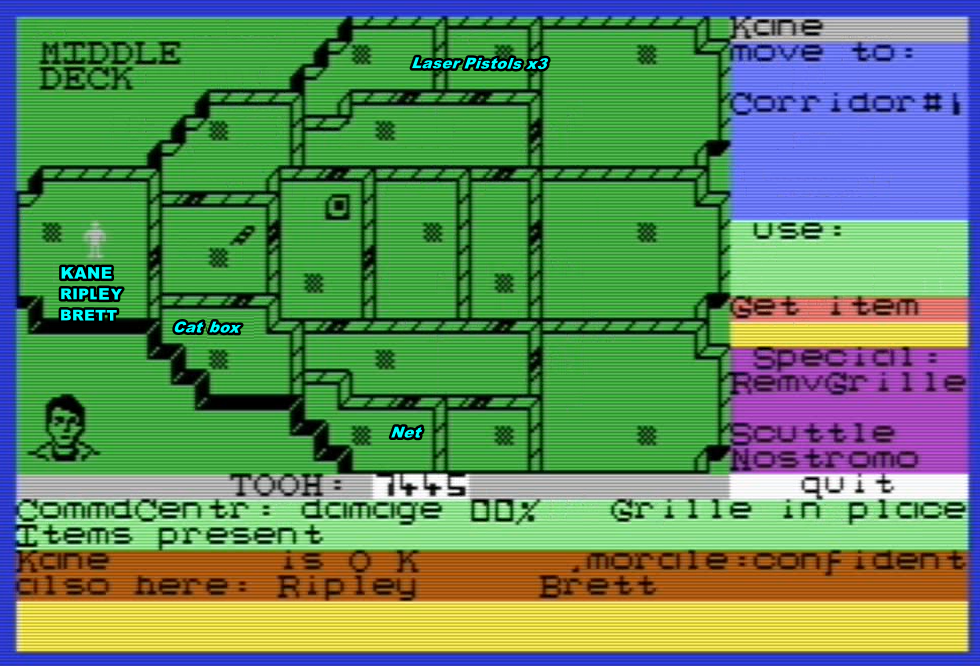
- Ash, Parker and Lambert are in the mess, itself in the upper deck. There isn’t a lot of items here, though that’s where the airlocks are and they’re presumably the best way to get rid of unwanted visitors. For now, the Alien is on the loose, so the three of them will beeline for the armoury to pick up some weapons.
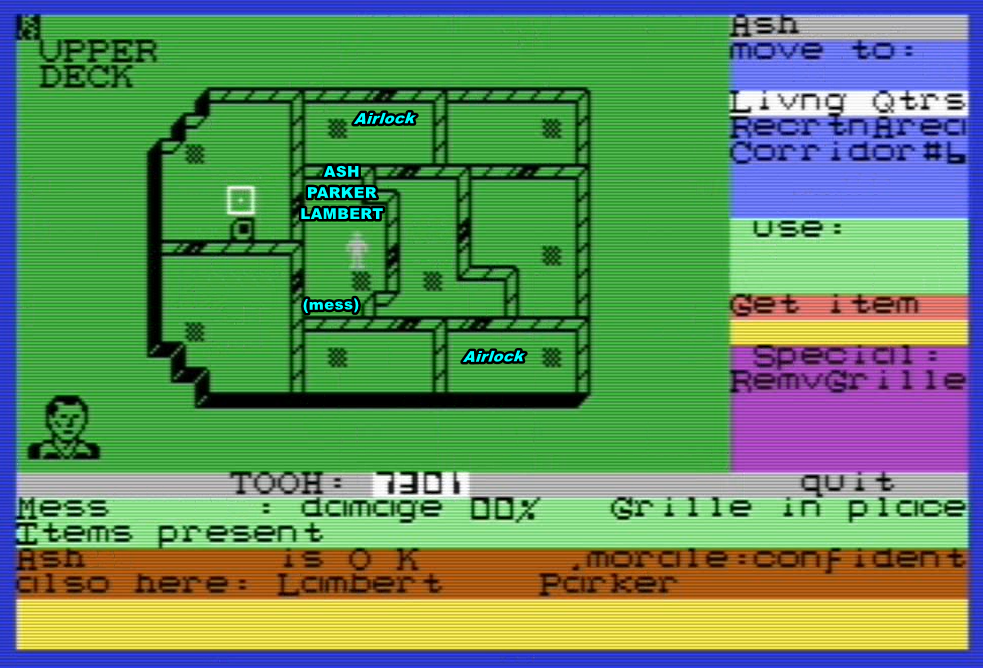
This is done without any surprise; Ripley’s motion tracker keeps beeping so something is close to her group, but we never get to see it.
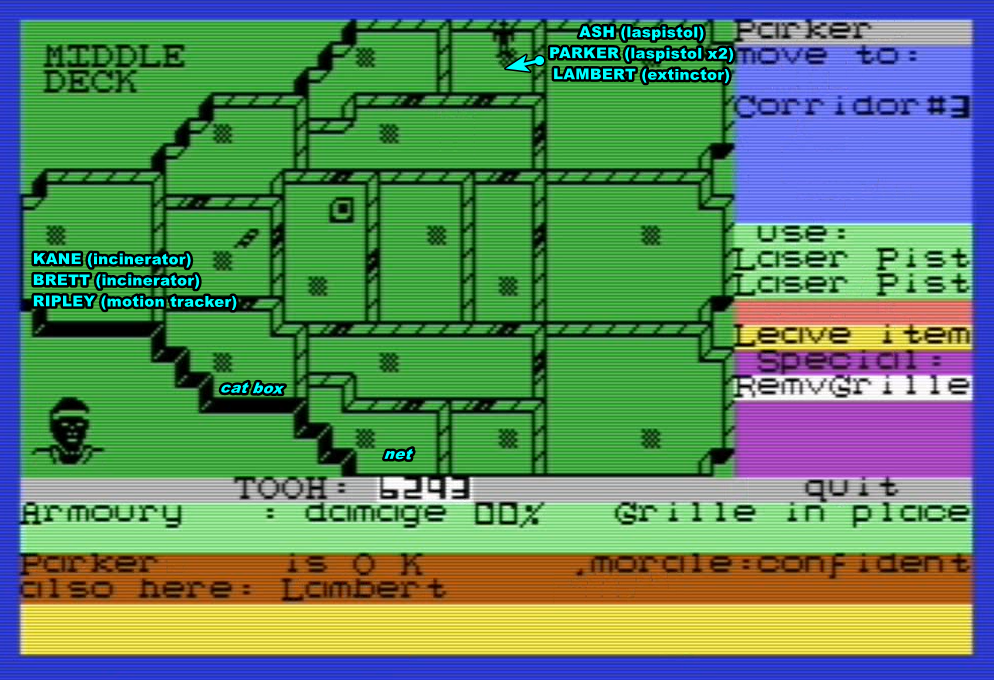
![]() Good job grabbing the laser pistols, we can now move to the important part of my strategy!
Good job grabbing the laser pistols, we can now move to the important part of my strategy!
![]() Sweep room after room until we find the Alien?
Sweep room after room until we find the Alien?
![]() Of course not! Get your priorities straight! First, we must secure the cat!
Of course not! Get your priorities straight! First, we must secure the cat!
In Alien, Jones the cat is one of the most important crewmembers. If, and by “if”, I mean “when” you will try to flee with the escape shuttle, Mother (the ship computer) will absolutely forbid you to leave if you haven’t the cat in a box with you – and it’s much easier to find the cat with 6 healthy and cool-headed crewmembers early in the game than with 2 wounded and panicked ones at the end. Two other perks of capturing Jones early is that he won’t trigger the motion detector anymore, and that he is himself a good complement to it, as the motion detector has (in my experience) a range of two rooms whereas Jones will become “uneasy” when the Alien is in a neighbouring room.
However, capturing Jones is a difficult task. Unlike my own cat who’s either in front of his bowl or sleeping on my bed, Jones can be anywhere on the ship. Worse, he can only be grabbed by a character holding either the cat box (with very little chance to actually force him inside) or a net (which high chance to capture him, allowing an easy transfer to the cat box). I send Brett to grab the box in the laboratory and Ripley (with escort) to grab the net in the laboratory store. The rest of the crew regroups in the center of the ship.
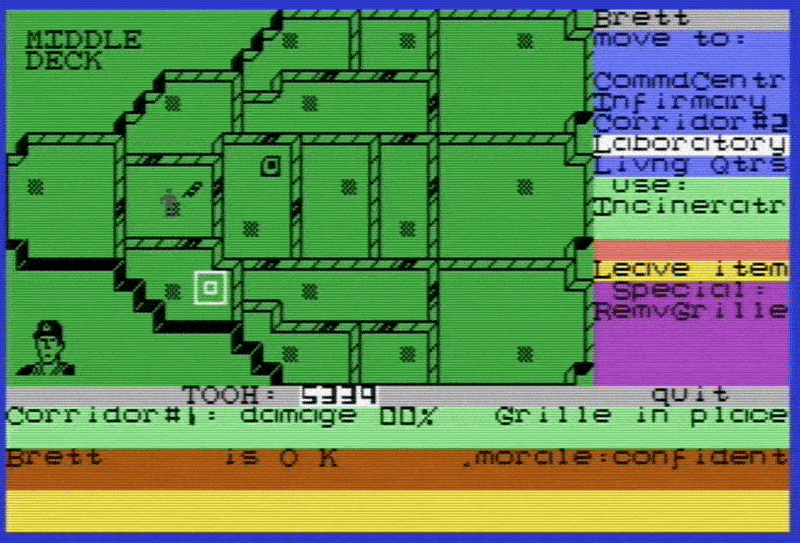
While I am focusing on Ripley, Lambert reports seeing Jones in the central room. By the time Ripley returns however, the cat is gone. Ripley looks for it in the cryo room (the centermost room of the ship) and then in the starboard corridor leading to the armoury.
![]() Psstt! Pssst! kitty kitty kitty.
Psstt! Pssst! kitty kitty kitty.
![]() Ah! I hear you!
Ah! I hear you!
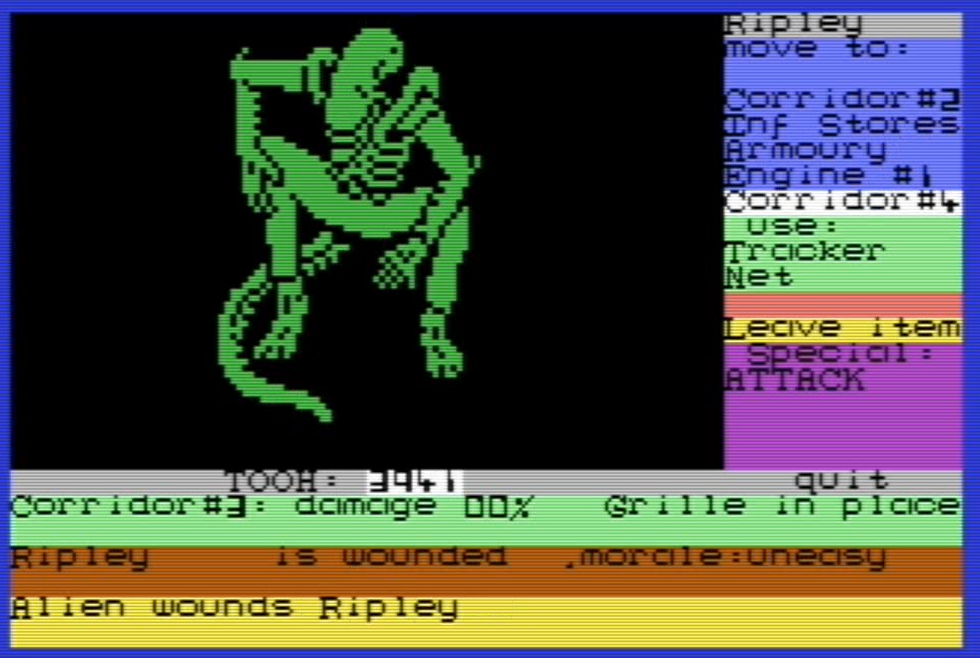
Ripley tries to throw the net at the Alien but fails. She then tries to flee but does not have the time and the Alien kills her.
![]() Really? Really? The exact same way Brett dies in the movie? Well, have fun seeing Brett in panties in the iconic final scene then.
Really? Really? The exact same way Brett dies in the movie? Well, have fun seeing Brett in panties in the iconic final scene then.
I know she’s dead because the TOOH (Time to Out of Oxygen) now decreases by only 5 every tick.
Well, at least I found the Alien. Lambert, Parker and Brett are nearby and rush into the corridor… but they don’t find anything, not even Ripley’s body nor, critically, the net!
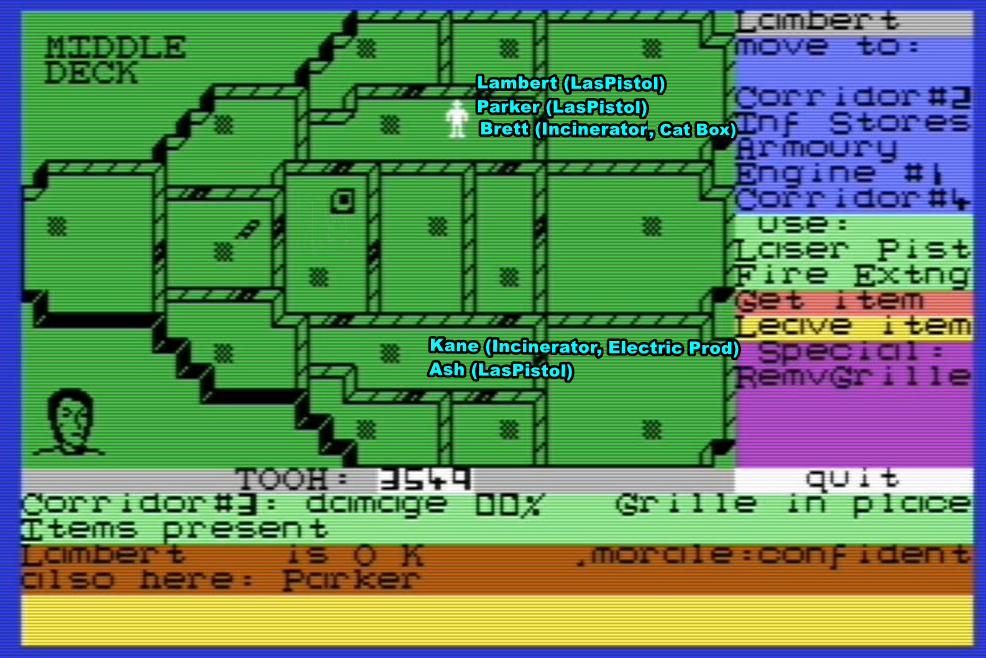
I explore the neighbouring rooms one-by-one with Brett staying behind; and just as Parker checks the rear corridor and Lambert enters the starboard engine room the Alien jumps on Brett. Parker and Lambert are ordered to immediately return to the starboard corridor. Combat ensues.
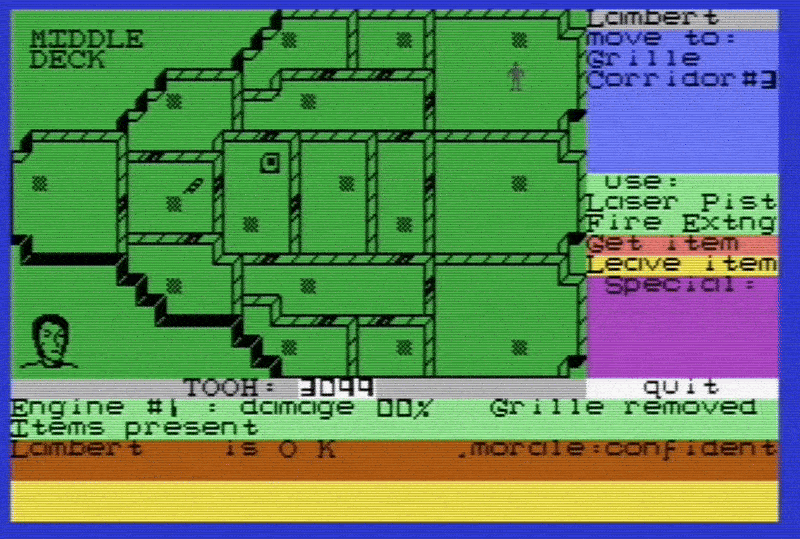
Against 2 laser pistols and one incinerator, the crew has a chance and the Alien is wounded several times. Unfortunately, that’s not enough, and Brett is killed.

It’s down to Lambert and Parker. Alas, using laser pistols is really damaging for the ship, and the corridor has 90% damage – one more laser pistol attack and the ship goes kaboom, so I order Parker and Lambert to leave the room.
![]() Parker, what are you doing?
Parker, what are you doing?
![]() Crew…. expendable.
Crew…. expendable.
![]() Come on! I can’t believe you said that! That’s the most tired sentence of the franchise. They even used it in the new (terrible) seri… aaaarrgh
Come on! I can’t believe you said that! That’s the most tired sentence of the franchise. They even used it in the new (terrible) seri… aaaarrgh
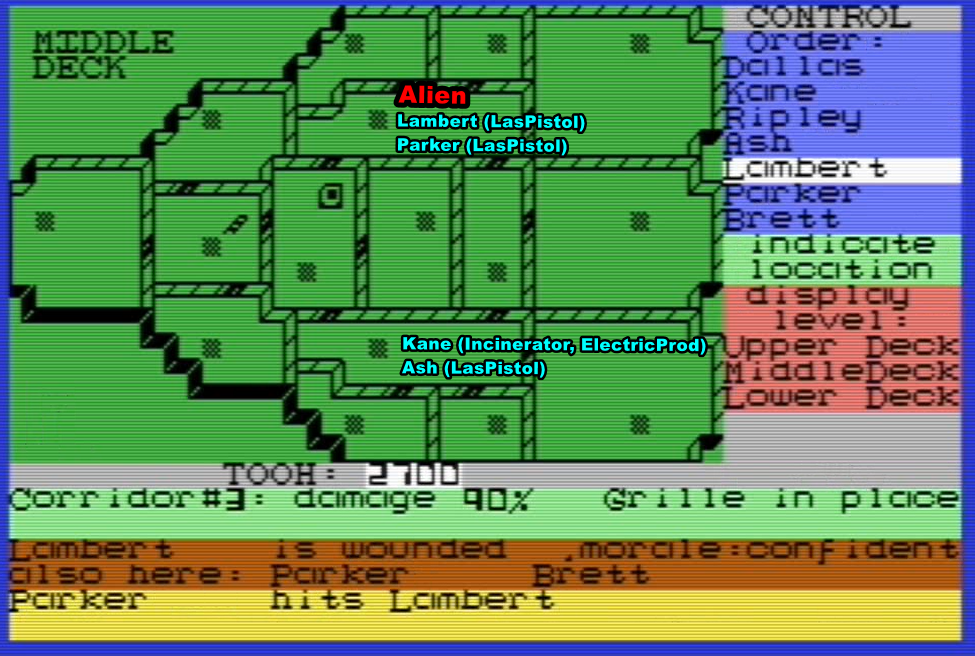
Well, Lambert and Parker never leave the room, because Android Parker kills Lambert (the TOOH counter starts ticking tickers 3 by 3).
This leaves Kane and Ash. In theory, that’s the moment where they grab the cat, run to the command center, activate the autodestruction and flee with the shuttle. There is a problem however: the cat box is in the starboard corridor with the bodies of Lambert and Brett and with either an Android or the invisible body of Ripley – and in Alien you can’t get in a room with already 3 crewmembers, whether living, dead or Android. No cat box, no Jones. No Jones, no evacuation. That’s one of the many issues I was mentioning in the introduction.
Plan B being unavailable, we return to plan A and try to find the Alien. We don’t have to look for him for long: he attacks us in the central corridor, but this time Kane and Ash fend off his attacks and it is forced to flee.
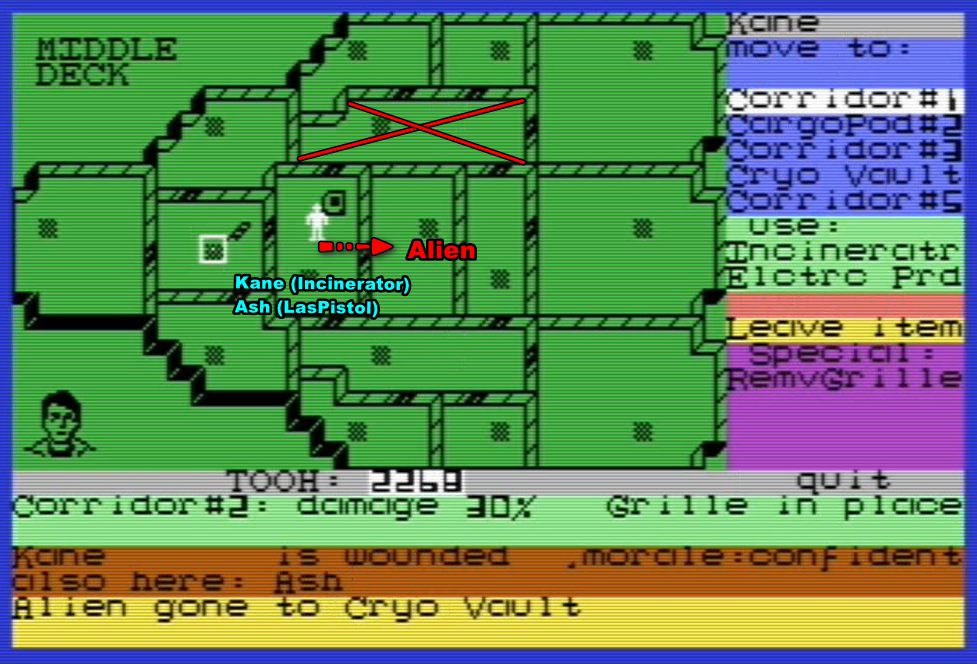
Kane and Ash pursue it in the Cryo Vault and wound it further, but it flees back into the central corridor, and then disappears forever. The ship is huge and I will never see it again.
Who I keep seeing, however, is Jones the cat. But of course, this is absolutely pointless without the box.
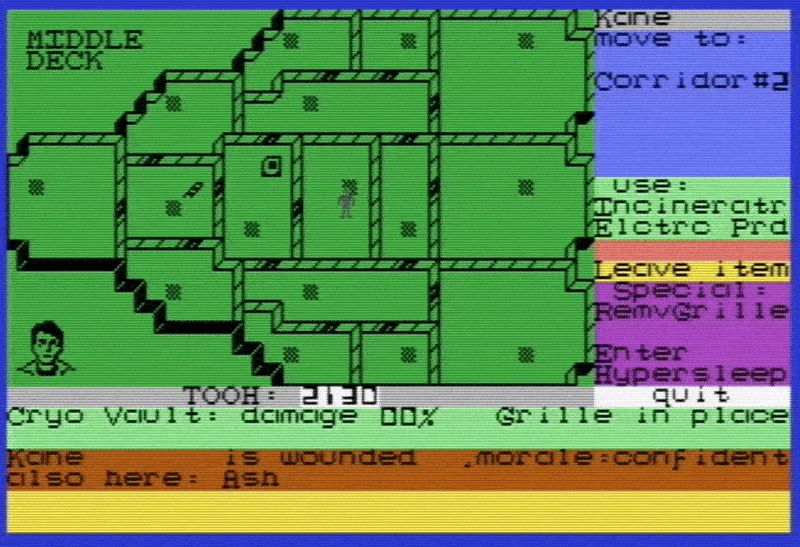
As the TOOH continues to fall, I realize I won’t have the time to kill the Alien and decide to activate the ship autodestruction.
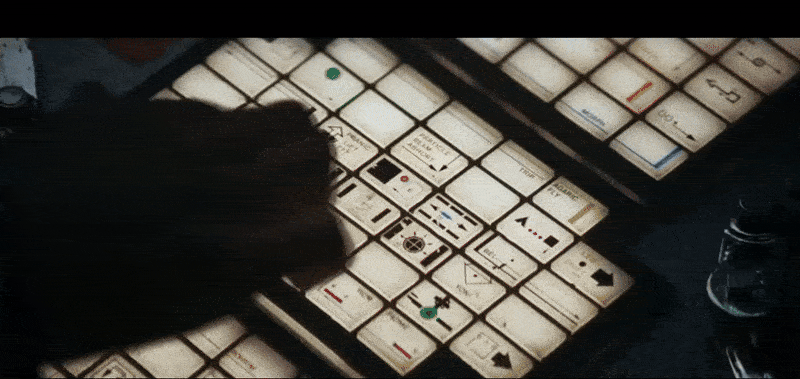
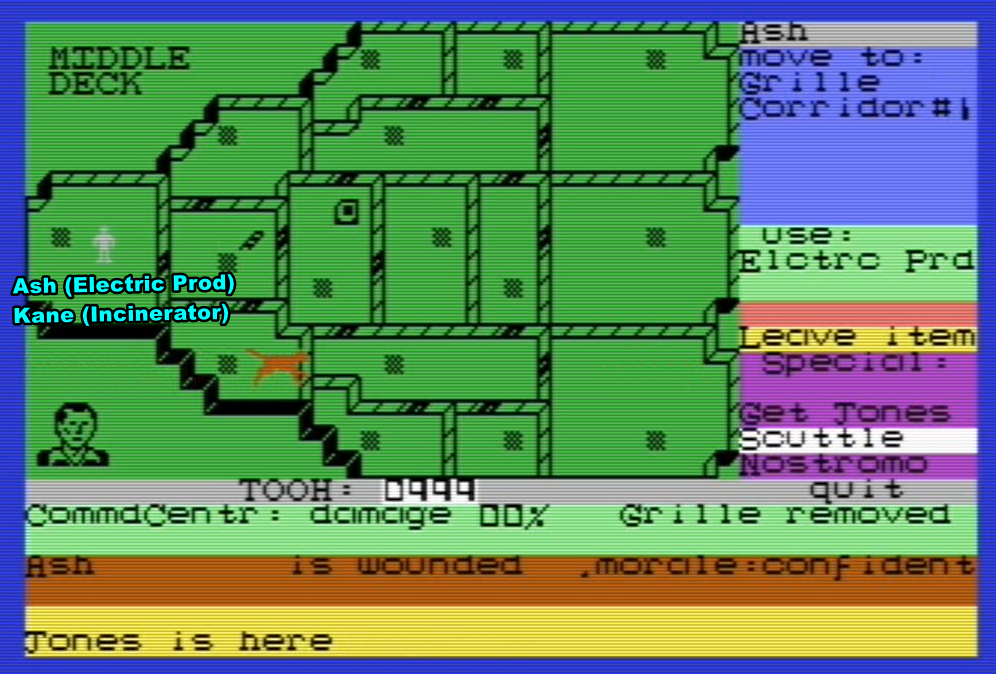
![]() Let’s go to the shuttle now!
Let’s go to the shuttle now!
![]() What’s the point? Mother won’t let us leave without the cat.
What’s the point? Mother won’t let us leave without the cat.
![]() At least we’ll get to show our readers something else than the ship map.
At least we’ll get to show our readers something else than the ship map.
![]() Are you going to show them your undies like in the iconi… ?
Are you going to show them your undies like in the iconi… ?
![]() No! Of course not! I am going show them pixel art!
No! Of course not! I am going show them pixel art!
And so while Ash keeps looking for the Alien, Kane moves to the lower deck and gets into the Narcissus, where he suffocates to death.
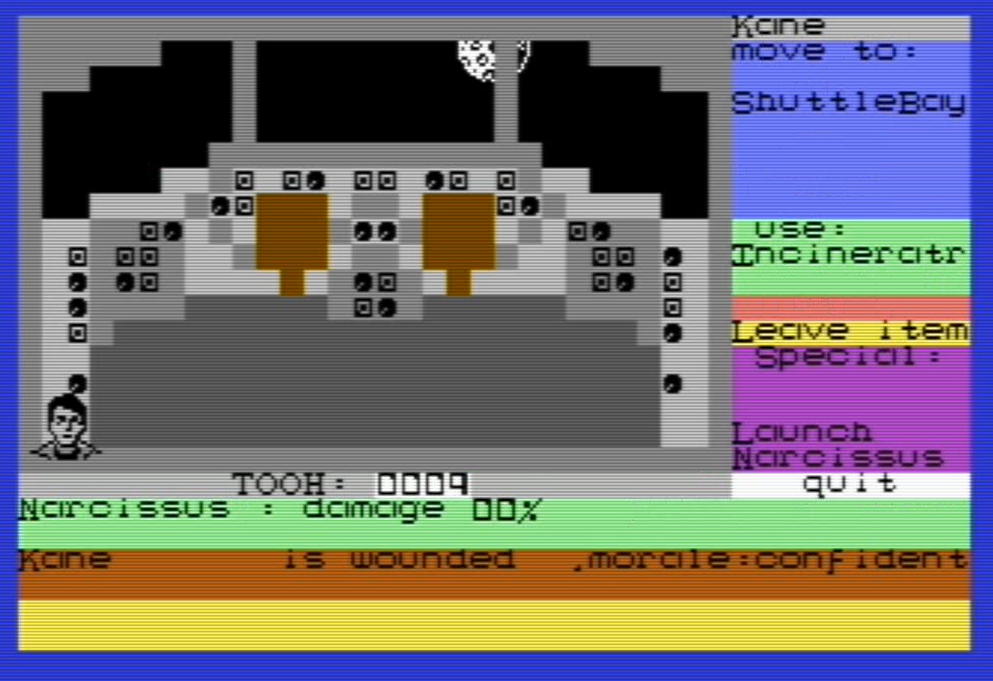
One minute later, the ship explodes and everyone dies, including the Alien, the Android and Jones.
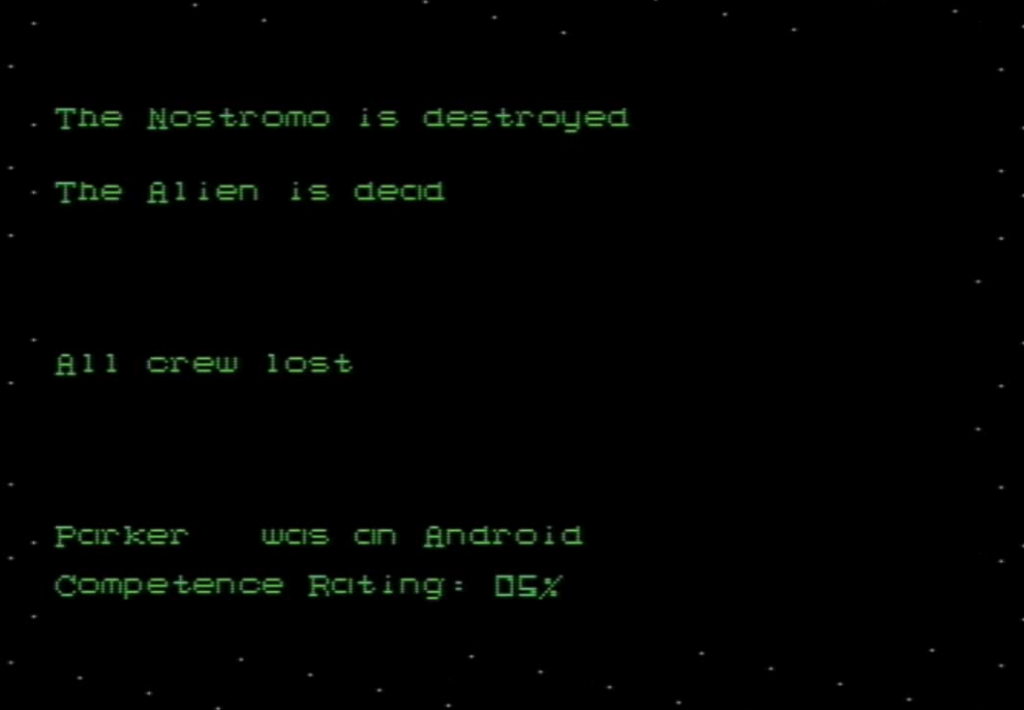
This would still make a better movie than Prometheus.
Ratings & Reviews
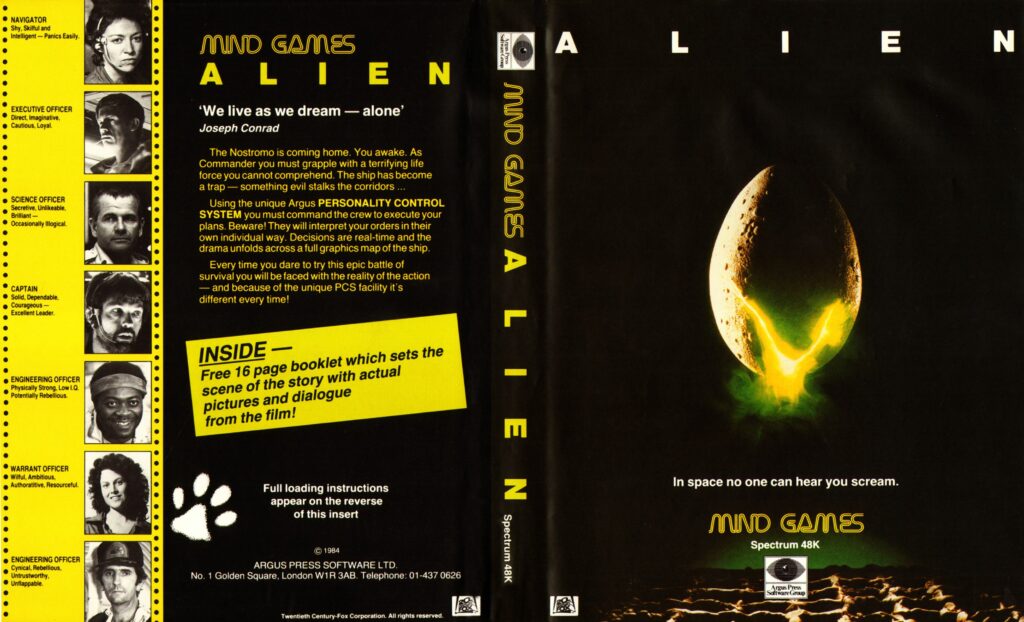
Alien, by Paul Clansey, UK, published by Mind Games and Argus Press Software, UK
First release: November 1984 on Commodore 64 and ZX Spectrum
Genre: Squad Tactics (sort of)
Average duration of a campaign : Around 30 minutes
Total time played : 8 hours
Complexity: Medium (2/5) due to UI issue.
Final Rating: Obsolete
Context – Alien is the brainchild of Paul Clansey, a passionate tinkerer of code since his studies of environmental science at the University of Lancaster. He used the university mainframe to code his first (unpublished) games, including a dam-busters sim. Being unemployed after his graduation in 1982 turned out to be his big break, as it gave him time to create games on his first personal computer: a ZX Spectrum that his mother gave him the same year. Clansey’s first published game was Trax!, a clone of the arcade game Side Trax. Trax! was initially published by Soft Joe’s Software, a Liverpool company that appeared, released around 10 games (mostly for Dragon & BBC Micro) and disappeared all over the course of 1983, apparently because the founders mostly found out that managing a video game company was less fun than expected. Clansey received almost no royalties from Soft Joe, but they had given him a Commodore 64 to port his game, which became Clansey’s preferred machine. As for Trax!, Clansey decided to distribute it himself, along with his subsequent games:” [I sold] through software houses, or even direct to shops, and in a few cases I did my own tape duplication and packaging, commissioning box art and getting it professionally printed. There were quite a few of us one-man-bands working from our bedrooms, it was the main way to make games before the big software houses came along. In my case, that was Imagine, which didn’t survive long.“
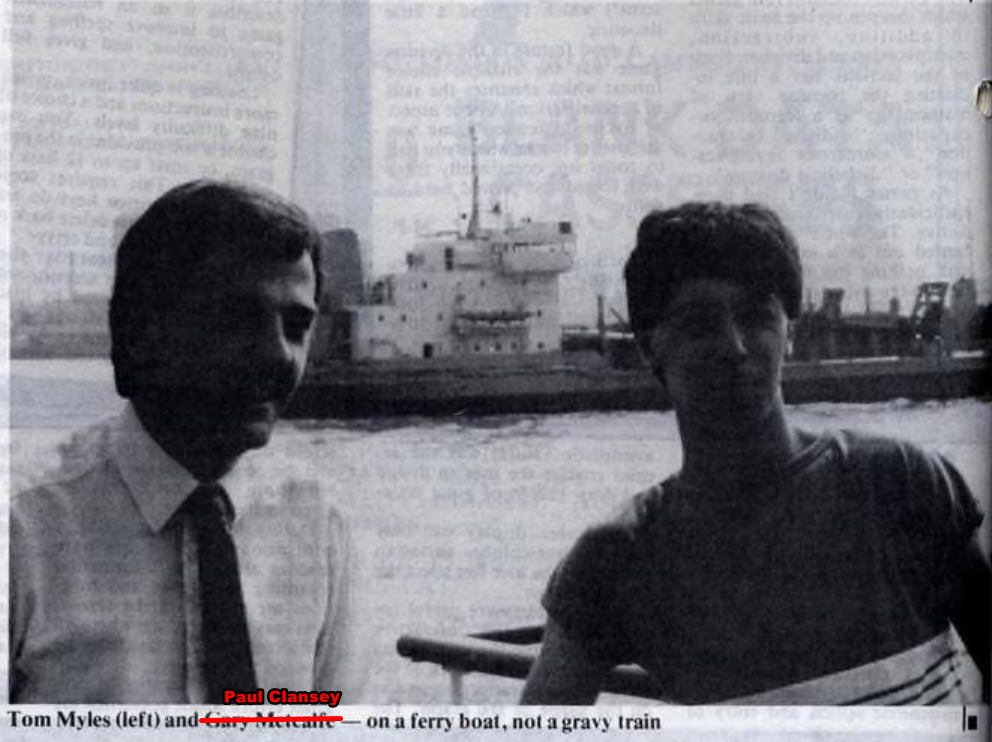
Having Trax! on his portfolio allowed Paul Clansey to join Imagine as an in-house developer in late 1983, though he only released one game (the unremarkable Cosmic Cruiser, for which he was only the coder and not the designer) before Imagine famously went bust in front of the BBC cameras. Once again, Clansey made the best of a bad situation, as some of Imagine’s developers and artists set up a new company called Mind Games, which quickly (or very possibly from inception) became an autonomous part of Argus Press Software.
Once at Mind Games, Clansey – a player of RPGs and wargames – wanted to make a game that combined both: “I was fascinated with the potential for early home computers to facilitate a multi-character RPG/tactical wargame experience for solo play. That got me considering a system for a solo player to control multiple characters, where a key feature was the control of those characters being compromised by their relationship with each other and their reaction to stressful or scary situations and events“. Two settings seemed particularly appropriate: a haunted house and Alien. Argus Press wisely chose the latter and started negotiating for the license, and Clansey developed Alien. As Clansey explained in an email: “Argus Press didn’t expect to get the license so asked me to re-title it as The Outsider and avoid obvious references to the film. Thankfully, before I had much time to think about doing that, they managed to get the license.”
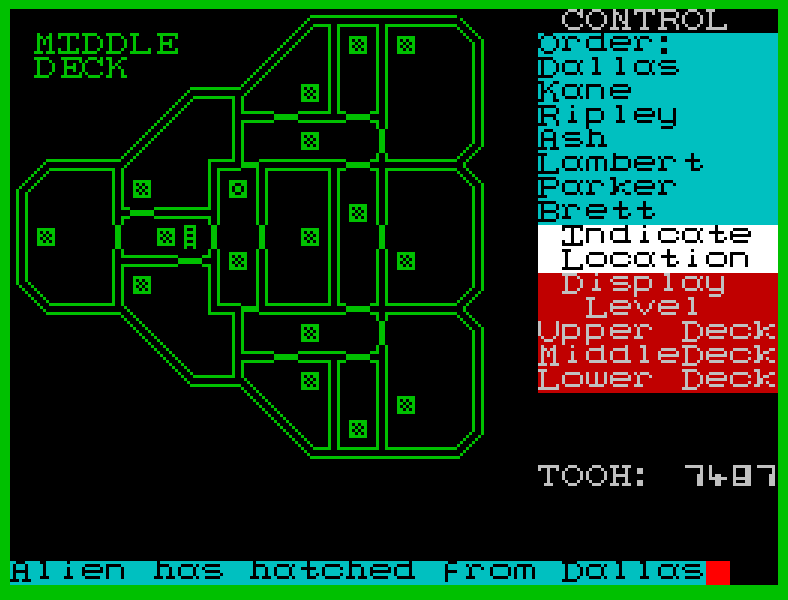
Alien was developed on Commodore 64 and then ported on Spectrum and Amstrad CPC; I played the Spectrum port (done by John Heap, another Imagine survivor except he did not have the time to make any games there – we will meet him again in 1985). The Spectrum port is faithful to the Commodore version with the occasional differences here and there (no choice of difficulty level for the most obvious part) and alas a much inferior sound design. I haven’t played the Amstrad port.
As a final note, Clansey had no knowledge of Avalon Hill’s game until our email exchange (“it looks rather impressive and if I’d been aware at the time, I would not have bothered developing my game, either as an official license product or even if just “inspired by”) and only skimmed through the rules of Task Force’s The Intruder, which had no influence on his game.
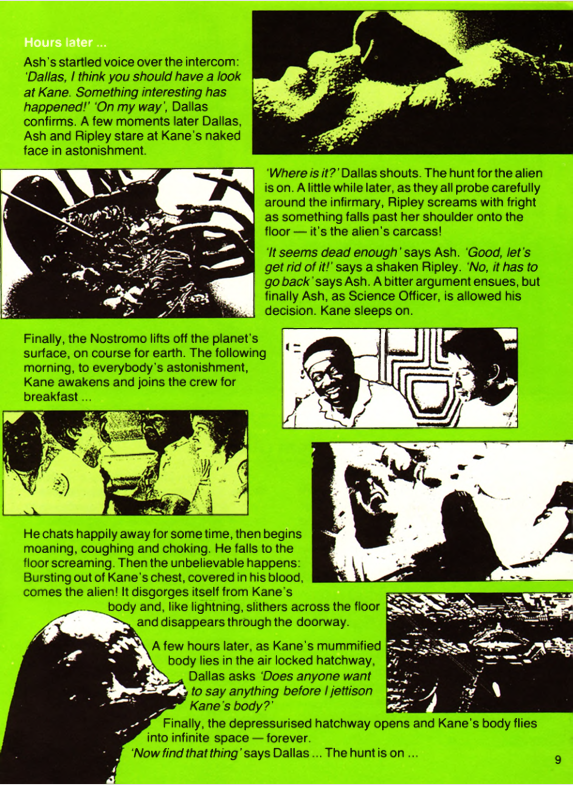
Traits – As explained, the objective of Alien is to kill the eponymous creature, either in combat or by ejecting it into space – and the latter in my opinion requires insane luck as the Alien could be anywhere, and there is no way to efficiently “push” the Alien in a specific direction. This leaves combat, relying on a short array of weapons (laser pistol, harpoon, incinerator, electric prod, net and spanner). At “real difficulty”, the Alien is incredibly tough (I never killed it), and it is of course helped by the Android who won’t identify himself but miss all his attacks, before attacking your crew after you receive your first casualties – at which point you can attack him (Lambert and Ripley can never be the Android on C64), but I never killed him either. If all else fails, the player must grab the cat, launch the ship auto-destruction and leave with the Narcissus. This all happens under two kinds of pressure: time (through oxygen) and ship integrity: if a room reaches 100% damage – either by combat, by fire (which can be put out with an extinctor) or due to damage randomly caused by the Alien – the Nostromo blows up.
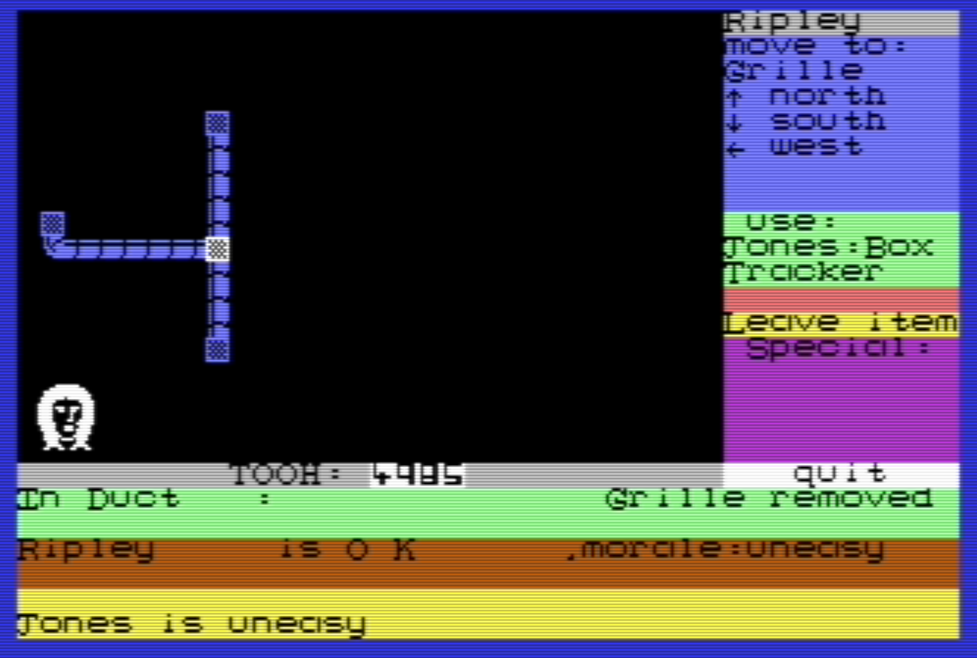
Alien stands out first by its formal quality. The manual includes a recap from the beginning of the movie with screen captures, up to the moment where the alien escapes. This formal quality continues as you launch the game, with the best intro music of the 150+ games I have played on this blog; Clansey explained to me it was “musically primitive but constantly evolv[ing] using SID chip filter sweeps to give it a more interesting organic feel.” It is in any case perfectly atmospheric for the game, as are the sound effects when you play the games: the “biiip biiip biiip” of the movement trackers, the distant sounds as the alien removes bars to transit through the ducts, and even the stressing alarm when engaged in combat. Alien manages to be remarkably tense for a 1984 game with limited moving parts, as depending on the game the Alien can be eerily absent or on you from the first minute; and due to the Android you can never be sure who to trust. Adrenaline also runs high during combat, as you need to race through a suboptimal menu to make sure none of the characters engaged in combat miss an occasion to attack.
This brings me to the critical issues of the game, which together really ruined for me. The first one is the UX and in particular the lack of feedback. There is very little information in the manual about how the game works (a choice by Argus Press to enhance replayability), a decision I might have appreciated if this did not include basic gameplay rules (like “no more than 3 people in a room“), and if there had been more information communicated in the game. It may be good design to let the player discover the skillset of the different crewmembers or how effective the weapons are, but when there is no message like “too afraid to move/room already full” or “missed a shot”, the game feels unresponsive rather than immersive. I was particularly happy to find that someone analyzed the game and the weapons on the Alien C64 wiki, While it is sometimes incorrect, I enjoyed the game more after reading it, and I wish it existed with the characters.
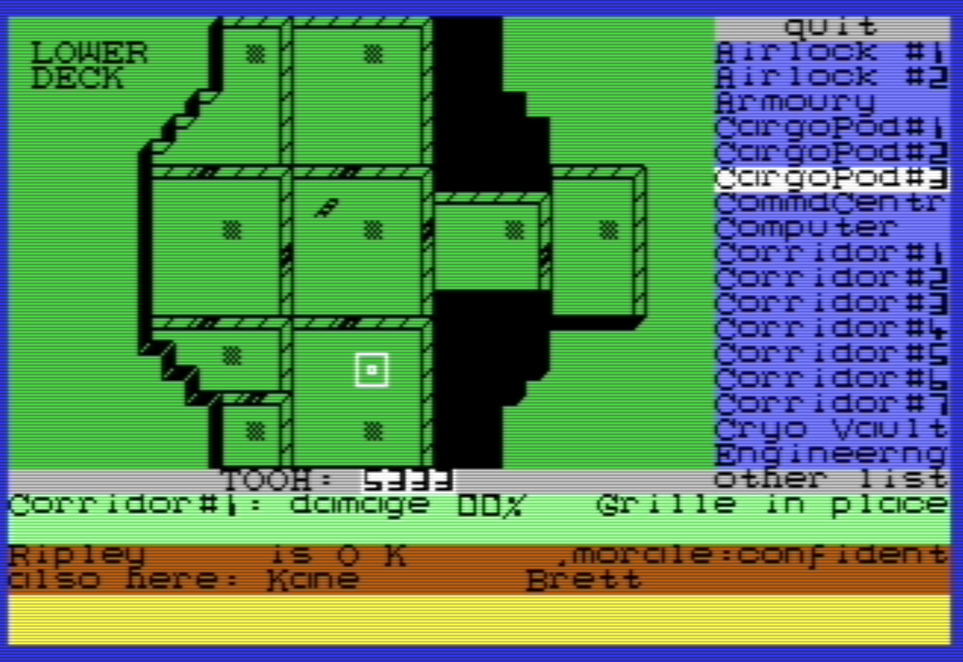
This issue alone would have been bearable. Alas, I was incredibly frustrated by the numerous bugs or design oversights. I have shown one: three bodies block a room forever, even if there are mission critical items in it; this one at least can be avoided by being careful. The worst issue in my opinion is that when crewmates are in absolute panic (typically because one of their buddies falls in combat next to them), they often never return to your control even after their morale returns to “stable” or even “confident” (you can see it if you try to select them while being in their room) – which means that they waste your air and block the evacuation (Mother wants all living beings in the shuttle before allowing take-off).
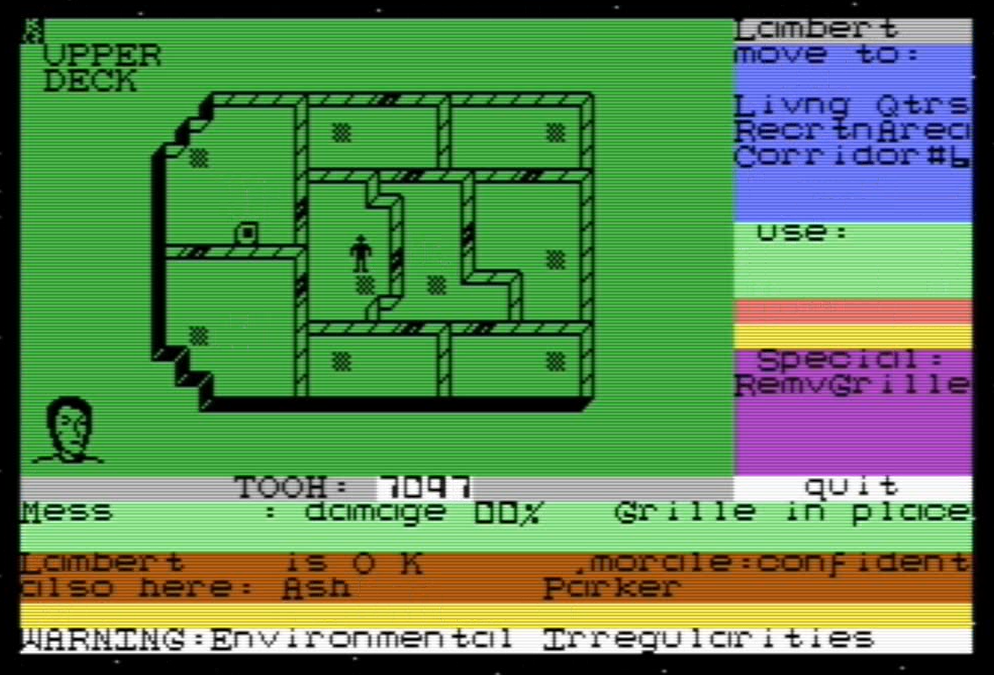
My final gripe with the game is how little tactical depth it has. The Alien starts at full size, so there is no arbitrage between “killing it fast” and “get as ready as possible”. Unlike in Avalon Hill’s The Alien where the Alien grew in power and some weapons took time to construct, the best strategy here is to beeline for whatever weapon you deemed the best and then fight as a group. As for the combat, it is simply about selecting the characters fast enough to avoid wasting attacks and hoping for the best. The “escape” phase feels much better, since you may be able to determine where the Alien is thanks to the motion detector and plan an alternative route; unfortunately by that point the “formerly panicked crewmate won’t move” issue is likely to have triggered, so instead of planning a route, most of this escape will be spent trying to select crewmembers unwilling to move, until oxygen runs out for everyone.
Did I make interesting decisions? Not that much; the main decision is when to pivot from “hunting mode” to “evac mode”. Just like with the game by Avalon Hill, this game is not about winning, it is about telling a story.
Final rating: Obsolete. I really wanted to like the game, but out of some 10 sessions I played on Commodore 64 and maybe 6 on Spectrum, only maybe 2 or 3 ended satisfyingly (even if everyone died)
Ranking at the time of review: 100/171. I find its ruleset inferior to the Avalon Hill iteration, but the latter’s UX made it (before it was modded by commenter Porkbelly) downright unplayable, so this more atmospheric Alien ends up ranking slightly above.
Reception
Computer & Video Games published the first review of Alien in February 1985… and they hated everything, even the sound (“like an old Coke can dancing on a tin roof“). While I understand being frustrated at characters refusing to move for no discernible reason, the reviwer also complains about numerous “bugs” that are just strange, like the joystick moving the Alien rather than the character. The review ended with a 2/10 rating, which triggered a letter to the editor not only from Clansey but also from another reader (April 1985), who both advised the reviewer(s) to RTFM:
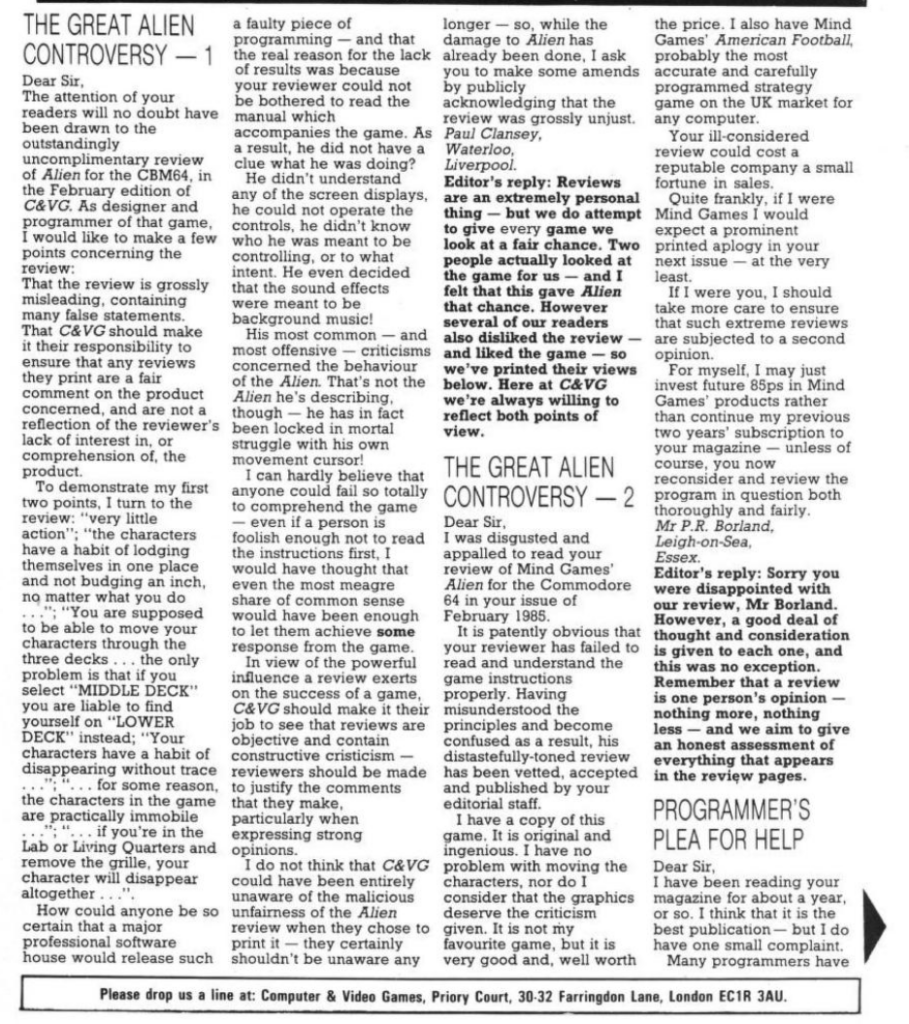
Clansey and The Alien were vindicated by pretty much every other review that followed, which initially rated the game anywhere from good to exceptional, at least for the ZX Spectrum and the Commodore 64 versions (the reception of the Amstrad CPC port was more lukewarm). I won’t bore you with 10+ reviews, let’s just say that the notoriously difficult to please Angus Ryall of Crash started his review with “a very good game indeed, and a very faithful reproduction of the film to boot” and ended it with “An excellent game — should keep you going for weeks. Hitchcock would have loved it.” and gave the game the coveted Crash Smash award.
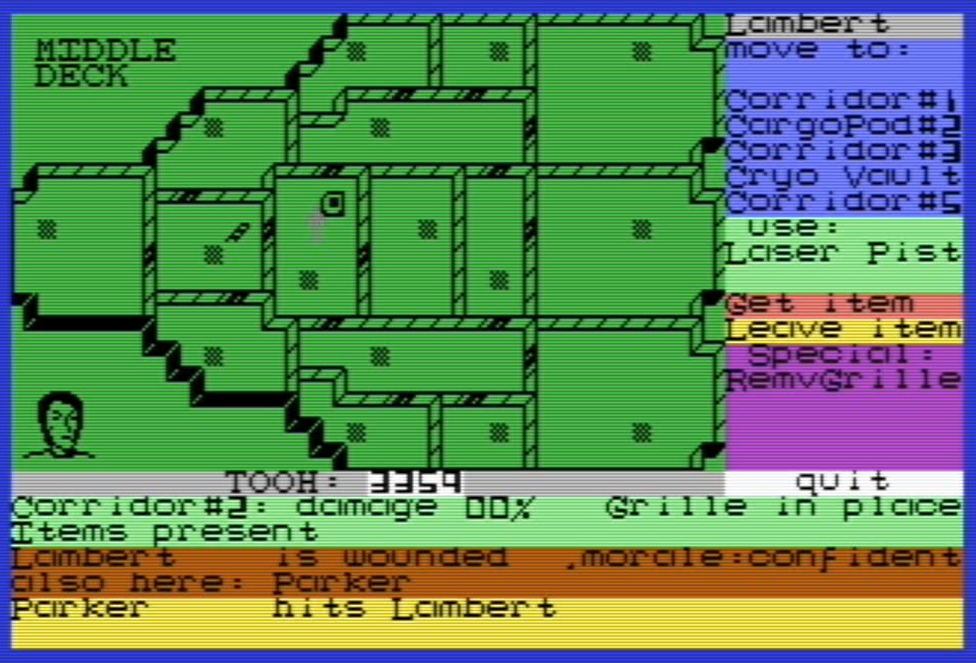
The reviews rarely fail to mention that the game has a slow pace and spartan graphics, but they most claim that its tense atmosphere more than make up for it. A good half of the reviews make hopelessly corny comments about how frightening the game is, for instance Commodore Magazine (March 1985) explaining that “only the bravest players should confront the Alien in the small hours of the morning. I’ll say no more — the hairs on my neck are bristling again.” or Your Spectrum (April 1985) which ended with “Remember in your bedroom, everyone can hear you scream – so keep it down a bit!” The pace is too slow and the graphics too limited for jumpscares, so I find Chris Bourne’s measured description in Sinclair User (April 1985) more appropriate: “Although the graphics are symbolic, and the representation of the alien not than frightening, there is a tremendous tension in playing the game […] When all you can hear are the sounds of the alien approaching, panic can easily set in.”
Alien received a second batch of reviews after a Bug-Byte re-release (at £2.99) in 1986. Those reviews were in general mixed, but in my opinion accurately convey the strengths and flaws of the game – with the best example being Popular Computing Weekly (November 1986): graphics are “utilitarian” and the game “ponderously slow,” but “there is actually a good game in here struggling to get out. Once the action gets going [the game is] very suspenseful.” Sinclair User also revisited the game in January 1987 and even mocked indirectly earlier reviews by its competitors : “The game is much happier as a budget title. At full price, the product promised too much. No matter how hard you try, it’s very, very difficult to promote a computer game as being genuinely scary”.
Alien was neither a success nor a complete flop commercially, but over time it became a semi-classic, as testified by the many comments left on Lemon64 and how often the game comes up in Alien-themed game retrospectives. We’re not done with Paul Clansey, and we’ll get to the rest of his career when we reach Evil Crown (1985).
As you know, we’re approaching the end of the year. The final game of the year will be Brøderbund’s Ancient Art of War – apparently showcased for the first time in Christmas 1984. I have played this game a lot in my youth, and the Data Driven Gamer played every scenario in order, and I don’t want to retread through his path. Instead, I will AAR whatever scenario(s) you send my way, ideally not “Puzzle-like”, and so offer something fresh to both me and my readers. Ahab has prepared a package here with instructions so you can level design and save your work easily!